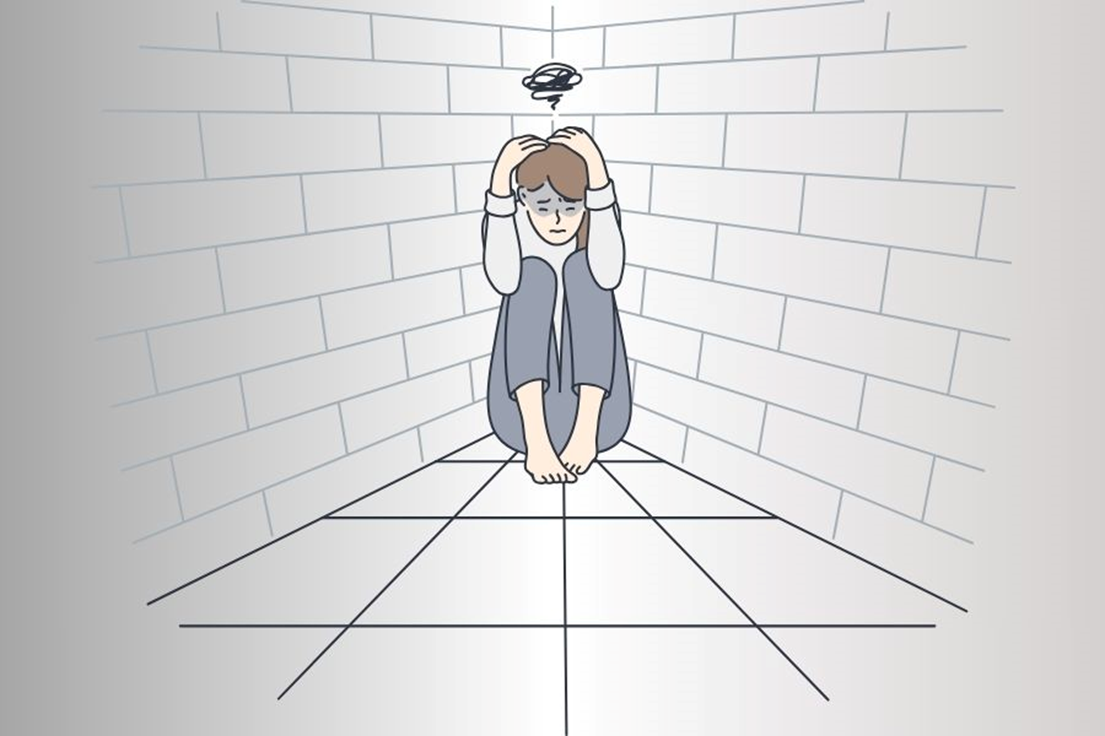
Paralysed with Anxiety- What Is It?

Swara (name and detail changed), a 24-year-old enthusiastic girl, woke up in the morning with a lot of sweat, a high heartbeat and rapid breathing. She took 10-15 minutes to understand what was going on. Where was she at that moment? And suddenly started crying for an uncertain reason.
She wanted to share and know what she could do in the future if she had the same experience. She thought to call her close friends, and relatives but later a thought came to her mind that they would be busy with their routine.
They will suggest that she should forget about it, and don’t take it seriously as usual.
The relatives would ask “n” number of questions and will start restricting her for everything she does.
She was thinking about it and looking into Google to get some answers. While doing this, she got to know about the Mpower Helpline services which are open 24/7. She immediately called the Mpower 1 on 1 helpline to get support.
During the discussion, she got to know that she was having paralysing anxiety.
What is paralysing anxiety?
Paralysing anxiety is distinct from other anxiety disorders. During normal situations when we experience anxiety; our body either reacts in fight, flight, or freeze mode. It means we either get ready to face the threatening situation with courage (Fight), or we escape from that situation (flight), or sometimes we get stuck and can’t do anything (Freeze).
In the previous two responses, a person can manage their emotions and feel the satisfaction of doing something. When a person freezes, it becomes difficult to handle the situation effectively and hence it leads to helplessness. The symptoms of paralysing anxiety are so severe, that person experiences the freeze mode.
The symptoms of anxiety paralysis may vary from person to person but they make the person helpless and overwhelmed. It includes fear, worry, panic, immobilisation, difficulty in making decisions, increased heart rate, rapid breath, persistent negative thoughts, nausea, shaking, numbness in limbs, and muscle tension.
Due to this the person starts avoiding interacting in social gatherings, gets conscious to engage in activities to avoid perceived threats, and becomes extremely sensitive towards the triggers.
The symptoms of paralysing anxiety are severe but it remains for some time. Our body takes some time to settle down. During that period a person may experience symptoms like physical anxiety paralysis and emotional anxiety paralysis.
- What is physical anxiety paralysis?
- What is emotional anxiety paralysis
Unlike physical paralysis, a person’s body becomes handicapped for some time. Though it remains for a short period, the symptoms are so severe that he/ she can’t move from the place, can’t think about the alternatives, and is unable to speak anything.
In other words, he/ she experiences “brain fog” (A mental state where a person can’t think, can’t focus on things, or does not remember anything). It could be a total numbness for some time.
It means a person feels extreme fear from within. The person becomes overwhelmed and it becomes difficult to handle themselves at that moment.
We can clearly understand that anxiety paralysis is similar to physical paralysis. The duration of physical paralysis is longer than anxiety paralysis. A person experiencing physical paralysis can overcome the physical loss through treatment and with the help of physiotherapy. It takes a lot of time.
On the other hand, a person who experiences anxiety paralysis can overcome the symptoms with the help of an experienced psychologist. It requires comparatively less time.
Causes of anxiety paralysis:
A person may experience anxiety paralysis due to various reasons like post-traumatic history, negative thinking patterns, history of anxiety disorders in the family, significant stressors in life, public speaking, taking an exam etc.
Thus, a person who tends to become paralysed with anxiety may experience that he/she can’t function effectively in his/ her personal, and professional life. It is advisable to get help from a mental health care professional, or nearby therapist. Taking consistent sessions would help to reduce the intensity of the symptoms.
Treatment plan:
Various emotional management techniques help to reduce the intensity of the symptoms of paralysing anxiety. Emotional management techniques regularly help the person to handle the triggers more effectively.
- Understanding coping strategies:
- Identify your triggers for planning a suitable strategy to manage its symptoms.
A person tending to be paralysed by anxiety needs to apply various techniques to calm down and select the best suitable techniques for the future. It may include- problem-solving, emotional expression, cognitive reappraisal, emotional regulation (Mindfulness, grounding techniques, breathing exercises), humour, social support, spiritual coping, exercise, positive thinking, assertiveness, acceptance, time management etc.
Role of therapy and medication:
If you are suffering from paralysed anxiety, you need to approach a therapist near you. Through therapy sessions, the person becomes aware of his/ her concern very well.
The psychologist can apply customise emotional management techniques, monitor them from time to time and develop coping strategies. A person gets emotional support during the sessions, and he/ she never feels alone.
A psychologist may choose therapies among the following-
- Cognitive behaviour therapy
- Exposure therapy
- Acceptance and commitment therapy
- Art therapy
- Dialectical behavioural therapy
- Eye movement desensitisation and reprocessing.
If the symptoms are not manageable with the help of therapy, then it is always better to get medications under the supervision of a mental health care professional.
image credit : freepik

How Psychotherapy Helps in Late-Life Depression And Anxiety: A Path to Healing, Hope, And Healthy Aging
How Social Isolation Impacts Geriatric Mental Health? How to Reverse It?

